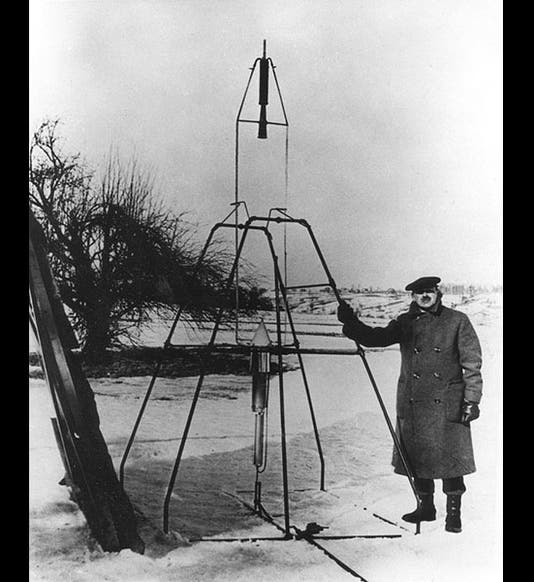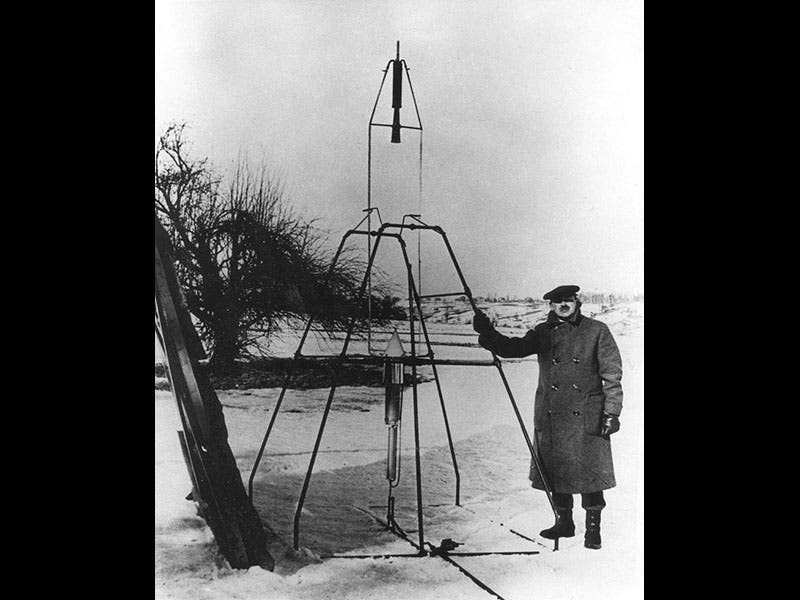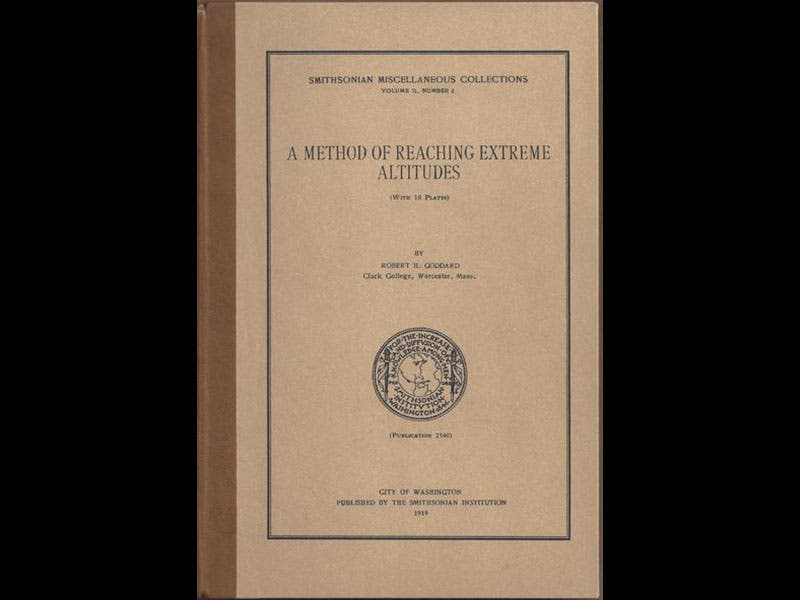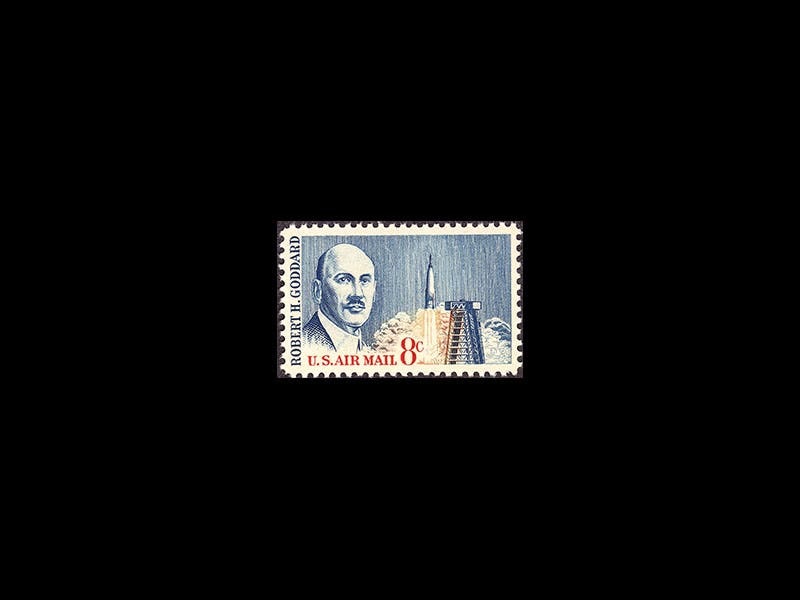Scientist of the Day - Robert Goddard
Robert Goddard, an American physicist and rocket pioneer, was born Oct. 5, 1882. While teaching at Clark University in Massachusetts, he wrote and published A Method of Reaching Extreme Altitudes (1919), a 69-page treatise that explained how to launch a two-stage solid-propellant rocket into the upper atmosphere, and, in a brief appendix, how it might be possible to send a rocket to the moon (see second image above). This is probably THE seminal document in the history of American space flight, even though it was written before Goddard had had much success in actually launching rockets. We have a copy in our History of Science Collection.
In the 1920s, he turned to experimenting with liquid-fueled rockets, and on Mar. 16, 1926, he successfully launched the first liquid-propellant rocket, from a field in Auburn, Mass (first image). It was quite a frail-looking structure: an assembly of pipes, with the rocket at the very top, and the fuel tanks (gasoline and liquid oxygen) at the bottom, shielded from the rocket blast by an asbestos cone. The pipework conveyed the fuel to the rocket and provided as well a minimum of rigidity. There was no skin on the rocket because even a thin wrapping would have made it too heavy to fly. The first rocket flight reached a height (the word 'altitude' seems inappropriate) of 41 feet. Over the next ten years, working mostly in secret, but very well-funded, Goddard greatly improved his rockets, so that eventually he was reaching 7500 feet with rockets that were gyro-stabilized and vane-guided. He is universally acknowledged as the father of American space flight.
The site of the 1926 launch is now a National Historic Landmark, and lies, it is said, in the middle of a golf course (third image). Perhaps a better memorial is the Goddard Space Flight Center, in Greenbelt, Md (fourth image). Goddard’s portrait was also commemorated on a U.S. postage stamp in 1964 (fifth image). Exactly six of them will get a letter to its destination these days, and that is without rocket assist.
Dr. William B. Ashworth, Jr., Consultant for the History of Science, Linda Hall Library and Associate Professor, Department of History, University of Missouri-Kansas City. Comments or corrections are welcome; please direct to ashworthw@umkc.edu.







![Columbine, hand-colored woodcut, [Gart der Gesundheit], printed by Peter Schoeffer, Mainz, chap. 162, 1485 (Linda Hall Library)](https://assets-us-01.kc-usercontent.com:443/9dd25524-761a-000d-d79f-86a5086d4774/3829b99e-a030-4a36-8bdd-27295454c30c/gart1.jpg?w=210&h=210&auto=format&fit=crop)



